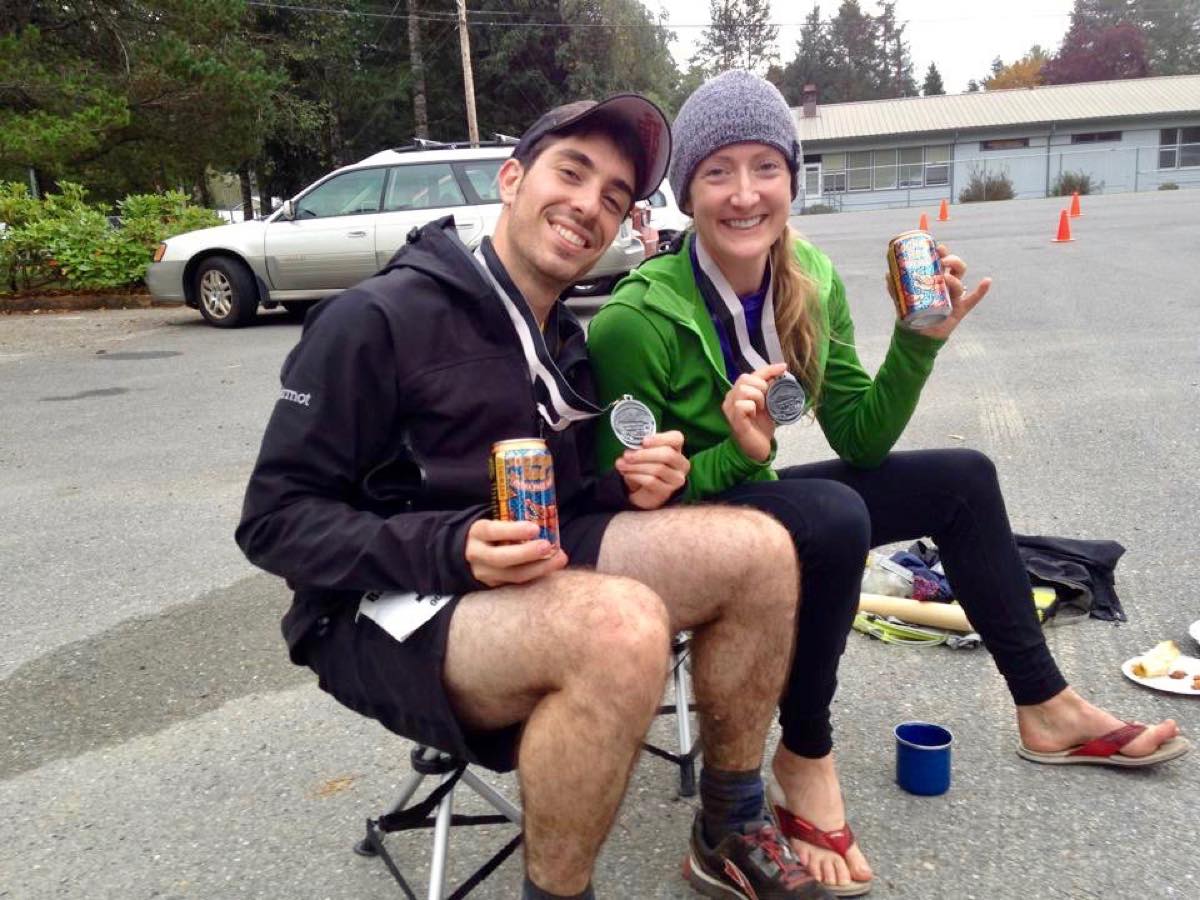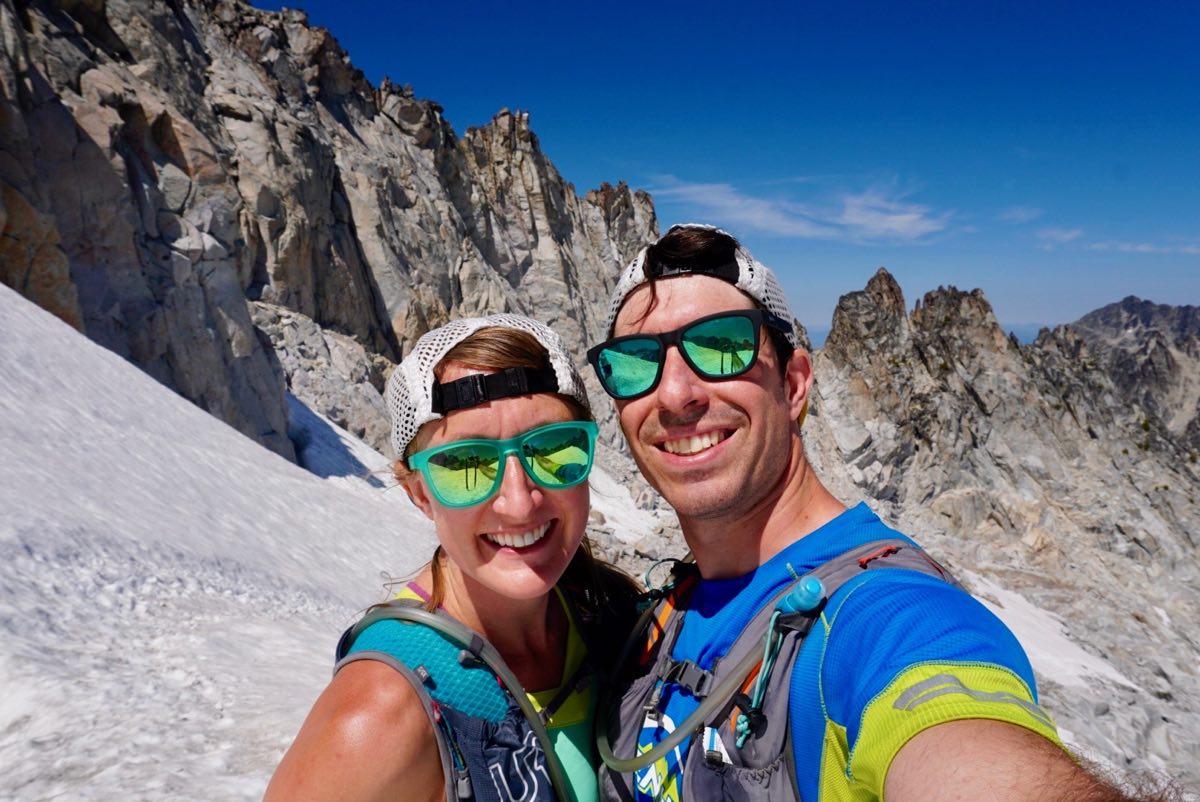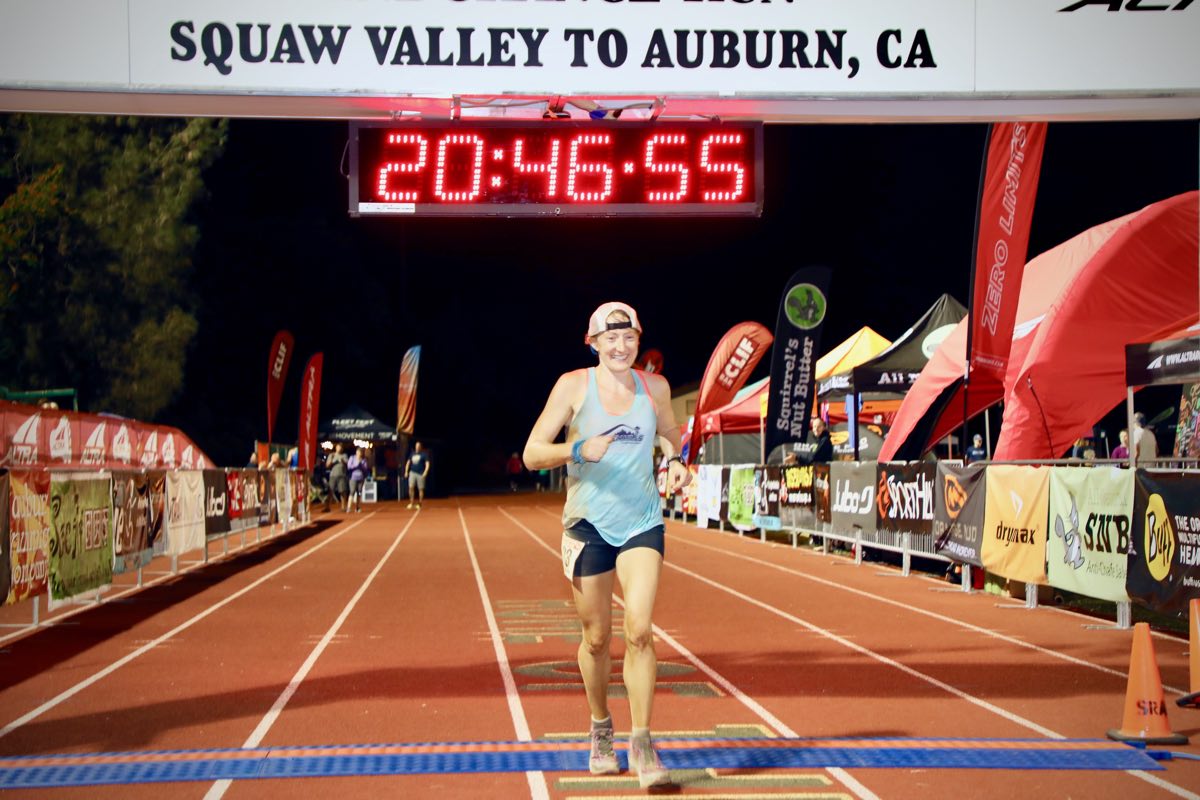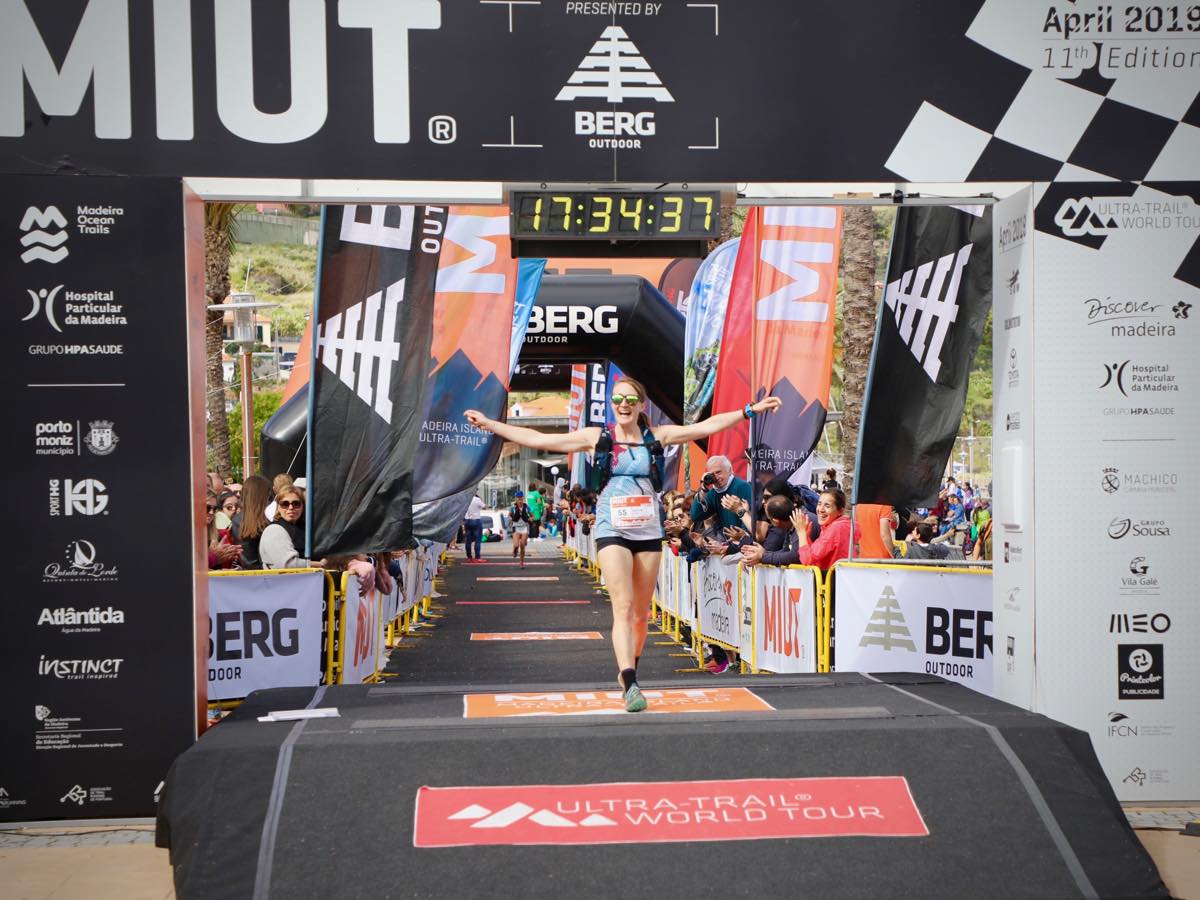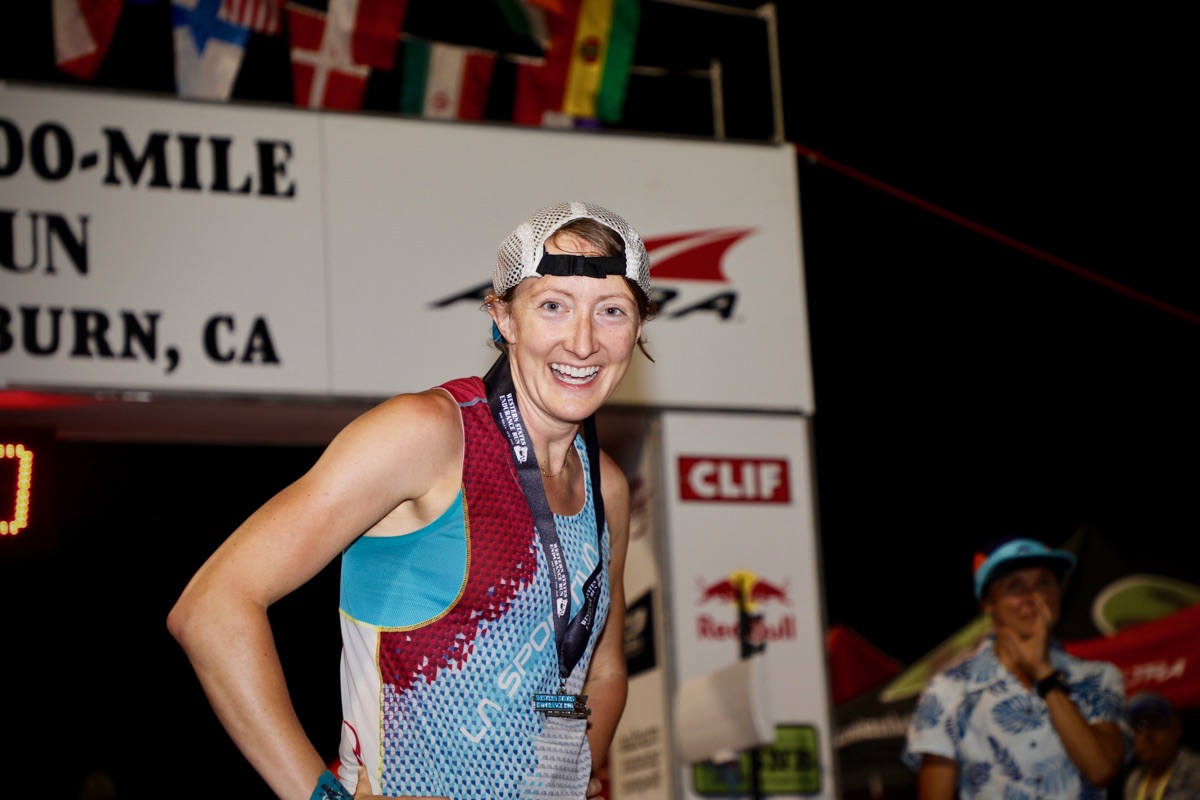Kaytlyn Gerbin, PhD is a scientist. “Science and mountains,” reads her Twitter bio. More specifically, the 30-year-old American is a bioengineer–she researches heart cells–at the Allen Institute for Cell Science in Seattle, Washington.
She enjoys her work. “We are taking a new approach to understanding human cells, by building visual models for how cells behave. Imagine developing a ‘Google Earth’ for a cell. The idea is that gaining a better understanding of healthy cells will help advance research in basic biology and also in disease.”
Yep, Kaytlyn is definitely a scientist. If a slightly rascally one. She is also a runner. A rather good one. She has placed second at the Western States 100 and Transgrancanaria, and 10th at the Trail World Championships, not to mention numerous domestic trail-ultramarathon wins.
Kaytlyn is clearly doing something right. Is it her scientific approach to the sport that has brought her success–in a comparatively short space of time? Her answer is no. “I try to be as non-analytical as possible–I like to use running as an outlet. I do most of my runs by feel. I’m a very organized person, and I like to have a general plan. But I don’t like to get too deep in the weeds about what exactly I want to be running every single day or analyzing my heart-rate data. I do enough analysis and data crunching during the day, so when I run I just like to go out in the woods and mountains.”
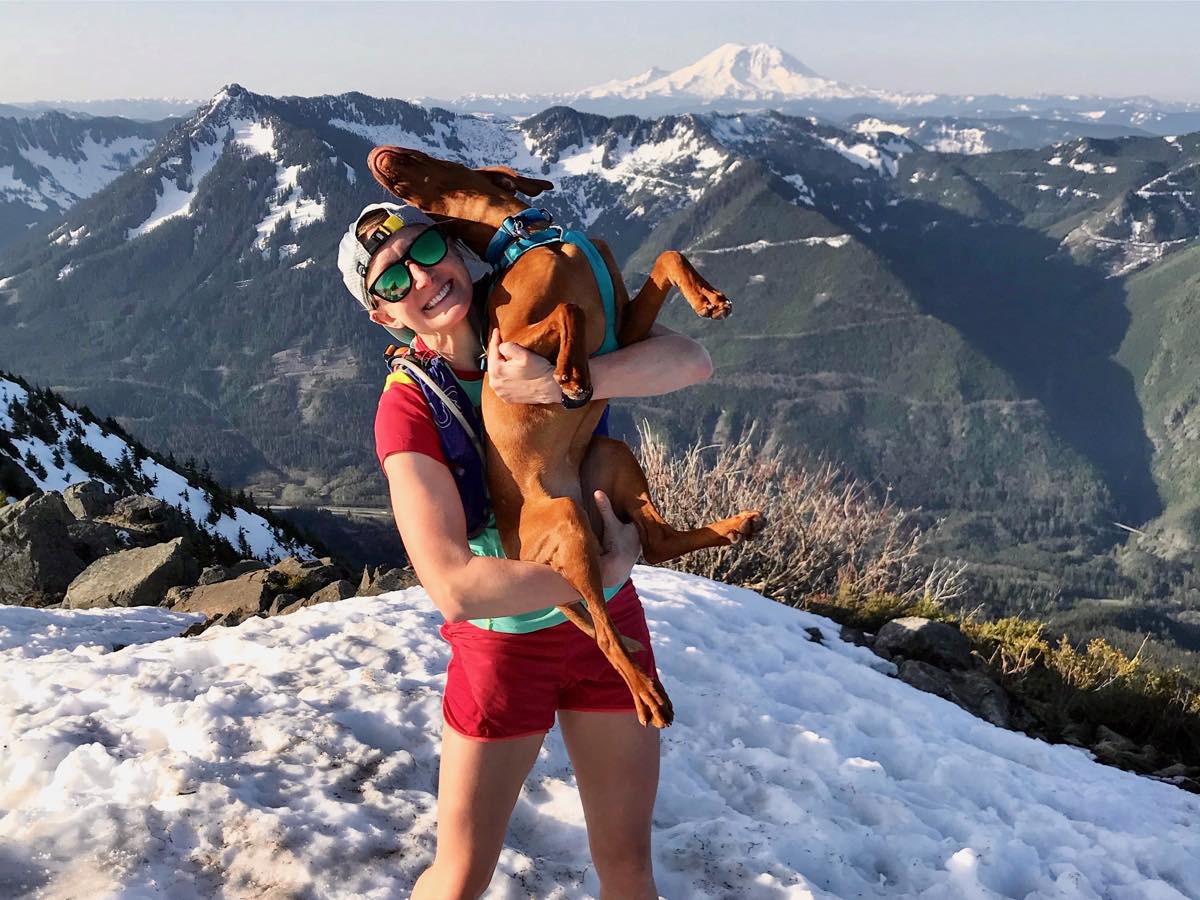
Kaytlyn Gerbin on a sunrise run with her dog Loowit near her home in Issaquah, Washington. Photo: Ely Gerbin
Growing up in Campbellsport, Wisconsin, about an hour north of Milwaukee, as the oldest of four, Kaytlyn spent time chasing her siblings around and running at soccer practice. She was raised in a rural farming area, with plenty of land to run around on. It gets prohibitively hot in the summer, but her parents decided that instead of air conditioning they would get a pool. “The idea was that with air con everyone would stay inside and play video games. Instead I grew up as a kid jumping in a pool to cool off–but also running through the woods and climbing trees. We would take horses way out in the back field–we wouldn’t tell our parents–and run them as fast as we could without a saddle until we fell off.”
She was always doing sports. “Some figure skating, but mostly team sports, a lot of soccer–our team was totally terrible. Later I got into snowboarding. Wisconsin has some 200-foot hills and that’s about it, but I loved it!”
She says she was never particularly good at one sport. “But I could pick up new sports really easily. I ran as part of soccer, but hated it. I remember one practice when the coach said we were going to run two miles and it seemed like the most miserable day of my life at that point!”
That changed at the University of Wisconsin-Madison, where she studied for a Bachelor of Science in Applied Mathematics. There, a friend recommended she join a class called Marathon and Distance Running. “I registered for fun, not realizing you needed to complete a marathon to pass it! I found a really good community and met training partners and that was really fun. I was enjoying the process of training. It’s a big deal when you run over 10 miles for the first time.”
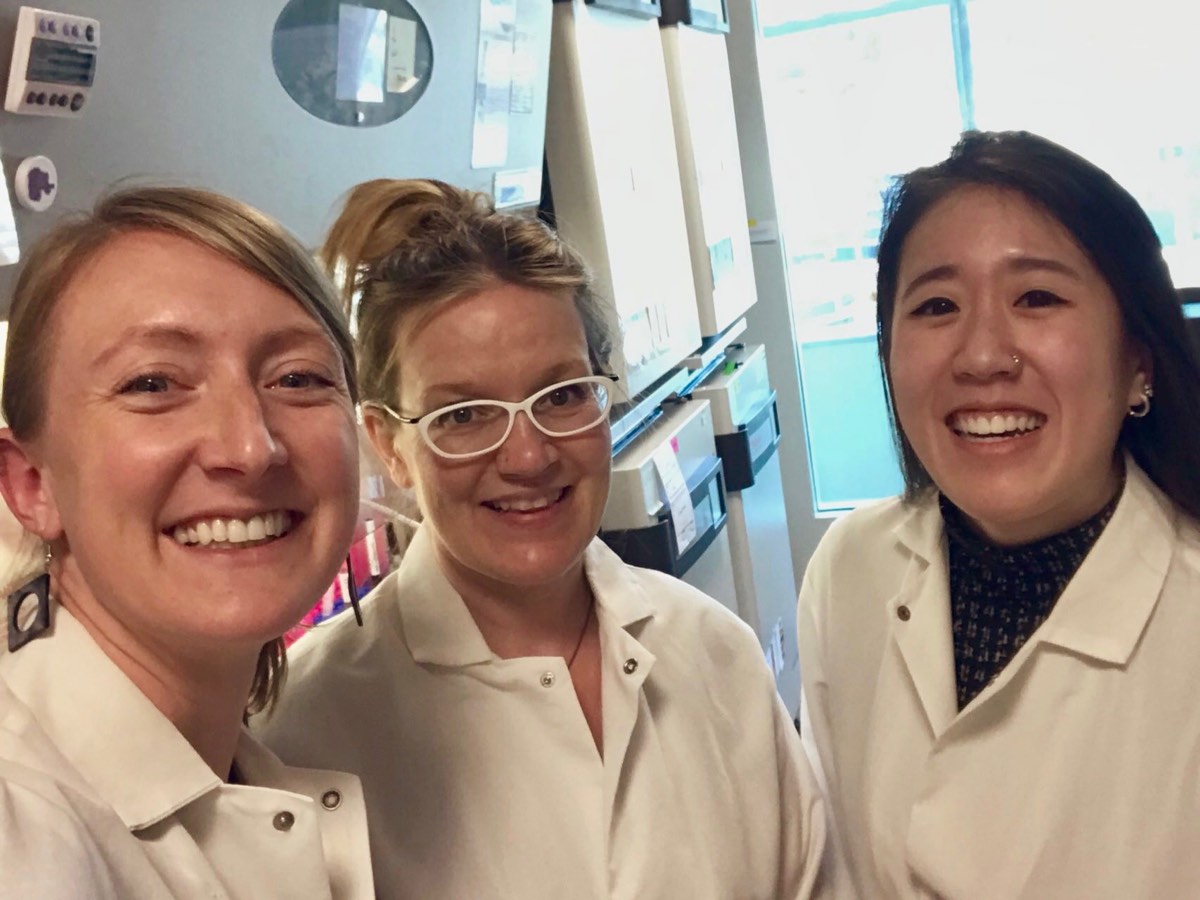
With coworkers Angel and Stephanie at the Allen Institute for Cell Science on International Women’s Day. Photo courtesy of Kaytlyn Gerbin.
But a snowboarding injury led to almost a year off running and as a consequence she failed the class. Next time around, she trained on her own for that crucial marathon, but ended up getting sick, and failed again. She finally passed at her third attempt and continued as a casual marathon runner. “Running came pretty easy to me, an indication that I might be decent at it. But it didn’t feel like it was a special gift that I should pursue further. I was only trying to be competitive with myself and shave a little time off my PR [3:30, set at her last road marathon in 2015].”
Her passion for the outdoors continued as she moved to Seattle to study for a PhD in Bioengineering, studying stem cell and tissue engineering at the University of Washington. “There are so many places to explore around Seattle. I got into backpacking, mountaineering, and rock climbing. I was constantly finding time to get out on the weekends, but also training for a marathon at the same time, often by run-commuting.”
Kaytlyn and her boyfriend (now husband) Ely initially met and bonded over their love for snowboarding. Kaytlyn explains how running became a part of their relationship, “He started running for ‘fun’ because we’d go on runs together when I was training for marathons. He started running more often and then completed a few of his own.”
Trail running came next. “One day while hiking up a trail, a runner flew past. Wait, what!? People do that? I wanted to also.” Ely and Kaytlyn dove into trail running together, signing up for the 2014 Baker Lake 50k. It was their first ultramarathon. “The first half was absolutely awesome. It was my first time running with a pack of people through the woods–at road marathons you’re never really talking to people–everyone was chatting and whooping and hollering. I was having too much fun and went a little too fast and made all the worst nutrition mistakes. My race was over at that point and I shuffled back to the finish. I was proud I’d finished, but I thought it probably wasn’t for me.”
However, ultrarunning is about much more than the race itself. “Afterward I was hanging out by the fire and drinking beer, as people peeled off to sleep these two guys were pitching all these different races to us–‘You should try this one! And this one!’–planting these seeds. Once the pain has worn off, you think, Maybe we should try another one? I was hooked.”
Kaytlyn’s second trail race was Beacon Rock 50k in June of 2015, at age 26. “I still really had no idea what I was doing in training and had no expectations. I was trying to be consistent and eat well and toward the end someone said, ‘Hey, the second-place women is just there.’” Kaytlyn caught her and placed second. “I was blown away. I had never been close to top 10 in any other race. It felt like a fluke.”
It wasn’t. Several 50ks and 50 milers followed and she often made the podium. “I was really enjoying running. I was probably running five or six days a week, even before I was super-serious about it, and most of my training was still in the city. I realized if I was going to be good I needed to run on trails.”
Two years ago, Kaytlyn and Ely moved out to the foothills of the Cascade Mountains outside of Seattle, which granted daily trail access. “Before that, we were always trying to find ways to get out to the trails in the middle of the week, getting up early and driving out before work. We thought, What if we just lived out there? But also, growing up in a small town and spending a lot of time outdoors, the city gets kind of suffocating.”
In 2016 Kaytlyn attempted her first 100 miler, the Pine to Palm 100 Mile. “I was running with a bunch of guys early on and they said, ‘I hope you’re saving your legs for the end of the race,’ and ‘If this is your first 100 you might want to slow down,’ and similar comments. As soon as the downhill came I screamed ahead of them and never saw them again. I was thinking, That’s right, don’t say that to me! It definitely fueled the fire.”
“I finished [in first place], it was pitch black, there was no one around except the race director and my crew, and I went inside a little building and fell asleep. I came back out and the finish-line arch had moved. (I think the police had come to move it to a different street.) I was like, Was this all a dream? You run so hard for 100 miles and it was this huge anticlimax with no one around and you think, Why did I run so far!?” She chuckles.
But there was and is reason to run so far. Kaytlyn elaborates, “During the award ceremony, every finisher shared a part of their race story with the crowd. This community aspect and low-key race environment really stood out to me.”
And there was also the fact Kaytlyn and Ely loved sharing running and outdoor adventures with each other, “Ely and I did most of the same races but started to diverge when I got into 100 milers because you need someone to crew and pace you. He’s been a really big part of my running and my love of running. I’ve always had a partner to go out with. We do a lot of training together, and it’s been an awesome thing to share.”
The 2017 Western States was only Kaytlyn’s second 100 miler. “I had a lot of feelings of imposter syndrome,” she says. “It was the first time I’d ever seen these amazing runners who’d I looked up to for years. But at the same time, I knew what range of time I was capable of running and I knew I could get into the top 10.”
There was a lot of snow on the course that year. “I was 30 minutes behind my split the first time I saw my crew. I threw my time goals out the window. Up until Foresthill at mile 62, I was pretty far back. In a lot of the longer races, I tend to be a pretty strong second-half runner. As other people are getting tired, I find a new gear and really grind. Ely joined me [as pacer] and we started cranking. We were passing people who were legends to me. That was unreal. With my next pacer, Ladia Albertson-Junkans, we just ran and kept passing people. It was probably the first time I really felt like I was racing. It was fun!”
She had placed fourth, which led her back to the start line in 2018 with a coveted entry for finishing in the top 10. In her second run at Western States, she’d ultimately finish in second place. “I’ve sometimes been a little too conservative with my pace. My racing mindset was to still run a strong second half, but to push just a tad more early on, to put myself in a little bit of a better position. Courtney Dauwalter just ran so fast! By the time I was ready to race, she had such a gap that I couldn’t close it. In competitive, fast races with really strong women, you have to balance running your own race with racing–which is quite risky. That’s something I’m still trying to figure out. But that’s what makes it fun.”
Before last year’s Western States, Kaytlyn had experienced her first European ultra, the 2018 Trail World Championships, which were held in Spain. “Representing your country was one of the cooler experiences you can have. The scene in Europe is very different. There are so many more people at the races, the energy and the vibe is very different. You immediately realize the scale of the event. We had a parade and floats and music and it felt like the Olympics.” Not only had she taken 10th individually, but she was the second American home, helping Team USA earn a team third place.
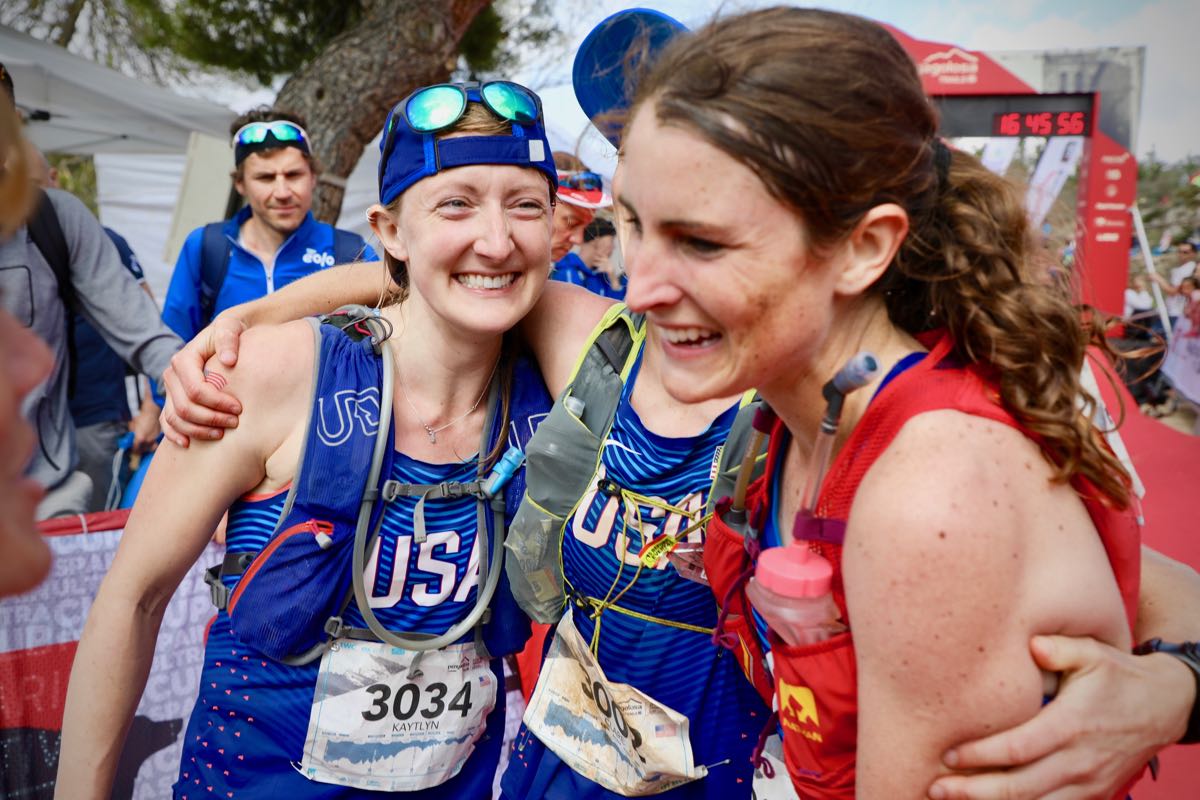
At the 2018 Trail World Championships with Team USA members Sabrina Little (foreground) and Clare Gallagher (behind Little). Photo: iRunFar/Bryon Powell
She returned to Europe in early 2019, placing second at Transgrancanaria. “I like the style of the courses and the energy of the European races. I got really sick right before the race, but I learned a lot. It was probably the most informative race for me–I really had to problem solve. I had no crew. I didn’t know anybody. I was like, I’m here, I’m doing this race, it’s not going well, what can I do? I got out of it exactly what I needed to. Do I like this style of race? And can I learn something to apply to other races?”
April’s Madeira Island Ultra-Trail, where she placed sixth, is described as “soul-cleansing.” “It was my birthday the day before, I’d just turned 30. I went into it wanting an awesome experience and of course I wanted to run well. I thought that if I had a good day I could shoot for the podium. A third of the way through I was running pretty well, but I knew I was quite far back from the front [which again included Courtney Dauwalter] and they were running so strong. I decided to just enjoy the island and race and have a good day. It became the most enjoyable race I’ve ever had, which is crazy because it was also the hardest race I’ve ever done. Of course, it’s fun to have a good day and a strong performance, but that doesn’t always happen and that’s okay.”
The big question is, will she have an even stronger performance at this year’s Western States? “The dangerous thing in trying to do better than second is you need to commit yourself to trying to win! I think I can improve my time. I also think there are certain sections of the course I could run better and if I trained more specifically and managed my effort differently, I could shave off a little more time. I can’t control what other people do–someone might go and have the race of their lives.”
She continues, “I don’t dig into data much, but in this case I’ve done the same race two years in a row and I can look into that and into my training leading up to it. That’s when I really do like looking at the data. If you can shave off minutes from a section, that adds up over 100 miles. But it looks like it might be snowy, so it may not be the same as trying to beat my times from last year.”
And so, once in a rare while, this scientist who prefers to the leave the data at the trailhead, brings a little bit of science with her on the trail.
Call for Comments (from Meghan)
Calling all Kaytlyn Gerbin stories! Leave a comment to share a story of running, racing, and/or adventuring with Kaytlyn. Thanks.
